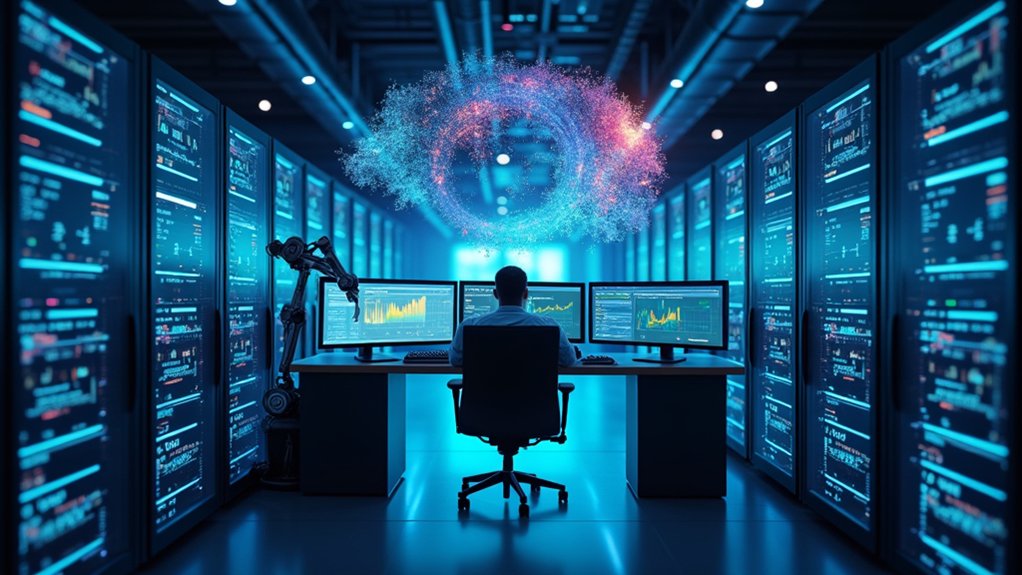A revolution has hit the data science world. Generative AI is transforming how data scientists work, and it’s about time. Those tedious tasks that once consumed up to 80% of their time? Automated. Data cleaning, ETL, preprocessing—all handled by AI now. This isn’t just a minor upgrade. It’s a complete role transformation.
Data scientists are no longer data janitors. They’re strategic thinkers. Problem solvers. The mundane stuff? That’s the computer’s job now. These professionals can finally focus on what matters: extracting meaningful insights and tackling complex challenges. Their AI assistants handle the grunt work.
The data scientist reborn: strategic thinker, insight extractor, problem solver. AI does the tedious work now.
The tools are impressive. ChatGPT, Google Gemini, GitHub Copilot—they’re changing the game. Data scientists use LLMs for natural language querying, GANs and VAEs for generating synthetic data. They’re integrating with Tableau and Power BI. The results? Better visualizations. Improved predictive models. Faster project delivery.
Don’t think for a second this means fewer data science jobs. Quite the opposite. The market is projected to hit $207 billion by 2030. New roles are emerging focused on AI implementation and oversight. The demand is growing, not shrinking. Funny how automation doesn’t always kill jobs, isn’t it?
Perhaps the biggest shift is democratization. Non-technical folks can now work with data. Marketing teams. HR departments. Finance. Everyone’s getting access to insights. They’re querying data conversationally through chatbots. No SQL required. Data-driven decisions everywhere. Like business analysts, data scientists are now able to boost efficiency and improve accuracy in handling complex datasets. Critical thinking skills are essential for data scientists to properly evaluate and avoid AI hallucinations when using generative models for analysis.
It’s not all sunshine and rainbows, though. There are challenges. AI outputs need validation. Bias is real. Privacy concerns exist. The computational costs can be steep. And everyone needs to keep learning because this technology moves fast. Really fast.
The bottom line? Data scientists aren’t being replaced—they’re being elevated. Their jobs are more interesting now. More impactful. Less boring. The machines handle the tedium. Humans handle the thinking. It’s a partnership that works.


